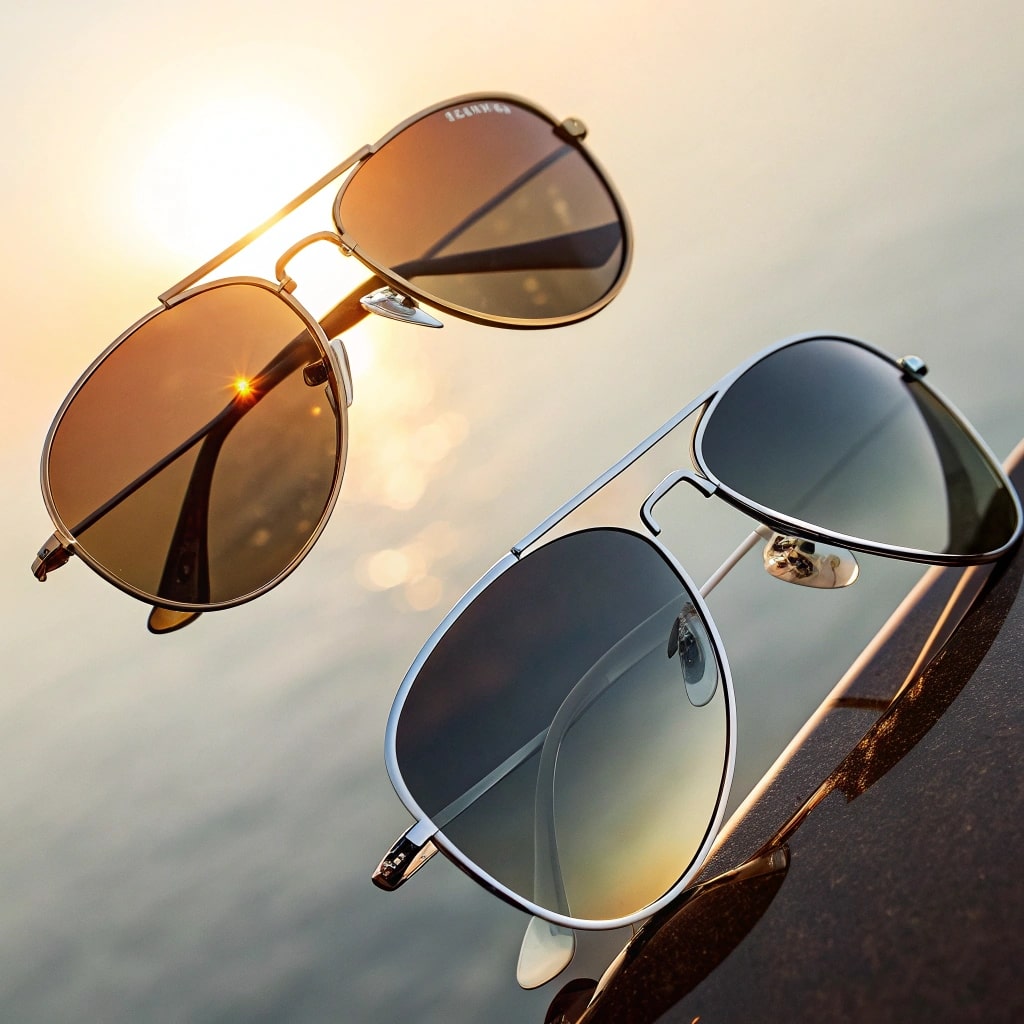
Lens Logic: A Complete Guide to Sunglass Lens Technology
Share
Why Lens Choice Matters
Choosing the right lens isn’t a vanity decision, it's a health decision. Over time, UV exposure can lead to cataracts, macular degeneration, and photokeratitis (a painful “sunburn” of the eye). High‑quality lenses block 100% of UVA and UVB rays and reduce glare, eye strain, and headaches in bright light. Whether you’re driving, fishing, hiking, or just walking around town, the lens technology you select directly impacts visual comfort and long‑term eye health.
Core Lens Technologies
UV‑Blocking Coatings
All modern sunglasses lenses—whether plastic or glass—should include a UV‑blocking filter that absorbs or reflects 100% of UVA and UVB rays. UV protection is the baseline; without it, no lens is safe regardless of color or material.
Polarized Lenses
Polarized lenses include a built-in filter that blocks horizontally reflected light, eliminating glare from water, snow, roads, and other flat surfaces. This improves visual clarity, contrast, and safety, especially while driving or fishing. Studies show polarized lenses can reduce glare‑related eye fatigue by up to 90%.
Photochromic (“Transition”) Lenses
Photochromic lenses darken automatically in response to UV light and clear up indoors. These “all‑in‑one” lenses are convenient for people moving repeatedly between sun and shade. Modern formulas (e.g., Transitions® Signature GEN 8) react in under 30 seconds and block 100% UV even when clear.
Specialty Lens Types
Mirrored Lenses
Mirrored (flash‑coated) lenses have a reflective outer coating that bounces more light away, reducing glare and providing a distinct, fashionable look. They’re ideal for extreme brightness—think high‑altitude skiing or desert trekking.
Gradient Lenses
Gradient lenses transition from darker at the top to lighter at the bottom, combining overhead sun protection with clear vision for reading or instrument panels. Drivers and fashion enthusiasts often favor single‑gradient lenses.
Double‑Gradient Lenses
Double‑gradient lenses tint both top and bottom, leaving the center lighter—perfect for activities with glare from above and below, like water sports or snowboarding.
Lens Materials
CR‑39 Plastic
Lightweight, optically clear, and cost‑effective, CR‑39 has been a staple for decades. It offers good scratch resistance when coated and is often used for prescription sunglasses.
Polycarbonate
Originally developed for aerospace, polycarbonate lenses are virtually shatterproof and naturally block 100% of UV without coatings. They’re the standard for sports, children’s eyewear, and safety glasses.
Trivex
A newer material similar to polycarbonate but with higher optical clarity and lighter weight. Trivex also offers built-in UV protection and impact resistance.
Glass
Glass lenses provide the best optical clarity and scratch resistance but are heavier and can shatter on impact. Used mostly in high‑end or luxury eyewear .
Lens Colors & Their Benefits
|
Color |
Benefit |
Best For |
|
Gray |
True color perception; reduces brightness evenly |
Everyday use, driving |
|
Brown/Amber |
Enhances contrast and depth perception |
Golf, fishing, variable light sports |
|
Green |
Reduces glare; enhances shadows |
Golf, tennis, general outdoor sports |
|
Yellow/Gold |
Boosts contrast in low light (dawn/dusk) |
Night driving, overcast conditions |
|
Blue/Purple |
Primarily fashion; mild glare reduction |
Style statements |
Advanced Lens Coatings
Anti‑Reflective (AR) Coatings
AR coatings eliminate internal reflections on lens surfaces, sharpening vision and reducing eye strain—especially useful for night driving or computer work.
Hydrophobic & Oleophobic Coatings
These repel water, oil, and smudges, making lenses easier to clean and maintaining clearer vision in rain or sweat.
Scratch‑Resistant Coatings
Hard coating bonded to the lens surface prevents micro‑abrasions, extending lens life and clarity.
Prescription Sunglass Lenses

Prescription sunglasses combine vision correction with full UV protection and any desired coatings. High‑index materials (1.67, 1.74) reduce lens thickness for strong prescriptions, while advanced coatings preserve optical clarity .
Lens Selection by Activity
|
Activity |
Recommended Lens Type |
|
Driving |
Gray or brown polarized, AR coated |
|
Running/Hiking |
Polycarbonate polarized, hydrophobic |
|
Water Sports |
Mirrored or polarized gradient, impact‑resistant |
|
Snow Sports |
Photochromic mirrored, anti‑fog |
|
Fashion/Urban |
Gradient or colored mirrored, scratch‑resistant |
Lens Care & Maintenance
-
Always store in a hard case to avoid scratches.
-
Clean with microfiber cloth and lens‑safe solution—never paper towels or clothing .
-
Do not rest sunglasses on your head (stretches frames).
-
Tighten screws periodically and replace worn nose pads.
Top Trends for 2025

-
Sustainable Lenses & Frames: Recycled plastics, bio‑acetate, bamboo frames.
-
Smart Photochromics: Faster‑reacting transition lenses (e.g., ZEISS Photofusion X)
-
Modular Lenses: Snap‑in magnetic lenses for interchangeable looks.
-
Blue‑Light Filtering Sunglasses: Combining UV and digital‑screen protection.
Where to Shop & Try On
-
Online Retailers: Warby Parker, Zenni Optical, Revant Optics—all offer virtual try‑on and home‑try programs.
-
Brick‑and‑Mortar: Sunglass Hut, local opticians—for in‑person fitting and prescription services.
